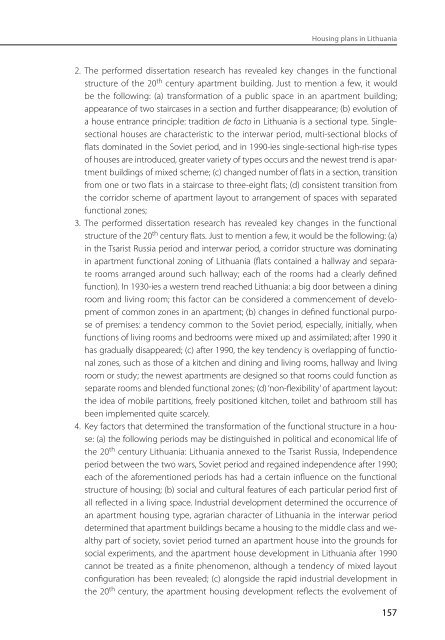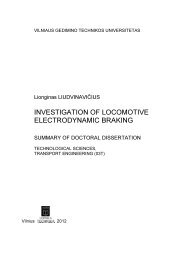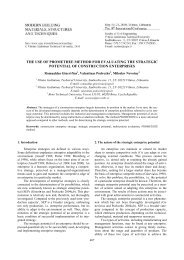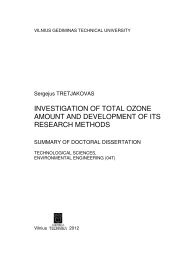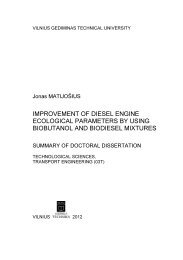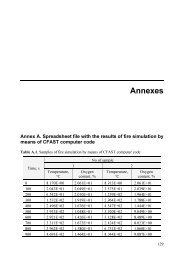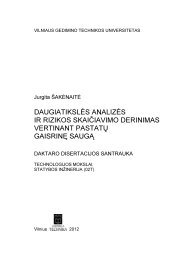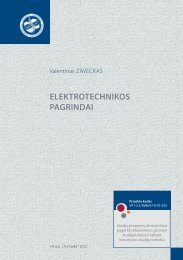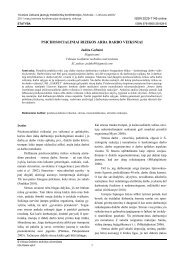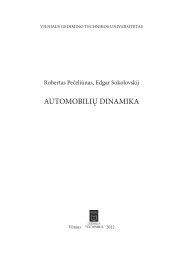daugiabuÄÂių funkcinės struktÅ«ros raida lietu - Vilniaus Gedimino ...
daugiabuÄÂių funkcinės struktÅ«ros raida lietu - Vilniaus Gedimino ...
daugiabuÄÂių funkcinės struktÅ«ros raida lietu - Vilniaus Gedimino ...
- No tags were found...
You also want an ePaper? Increase the reach of your titles
YUMPU automatically turns print PDFs into web optimized ePapers that Google loves.
Housing plans in Lithuania2. The performed dissertation research has revealed key changes in the functionalstructure of the 20 th century apartment building. Just to mention a few, it wouldbe the following: (a) transformation of a public space in an apartment building;appearance of two staircases in a section and further disappearance; (b) evolution ofa house entrance principle: tradition de facto in Lithuania is a sectional type. Singlesectionalhouses are characteristic to the interwar period, multi-sectional blocks offlats dominated in the Soviet period, and in 1990-ies single-sectional high-rise typesof houses are introduced, greater variety of types occurs and the newest trend is apartmentbuildings of mixed scheme; (c) changed number of flats in a section, transitionfrom one or two flats in a staircase to three-eight flats; (d) consistent transition fromthe corridor scheme of apartment layout to arrangement of spaces with separatedfunctional zones;3. The performed dissertation research has revealed key changes in the functionalstructure of the 20 th century flats. Just to mention a few, it would be the following: (a)in the Tsarist Russia period and interwar period, a corridor structure was dominatingin apartment functional zoning of Lithuania (flats contained a hallway and separaterooms arranged around such hallway; each of the rooms had a clearly definedfunction). In 1930-ies a western trend reached Lithuania: a big door between a diningroom and living room; this factor can be considered a commencement of developmentof common zones in an apartment; (b) changes in defined functional purposeof premises: a tendency common to the Soviet period, especially, initially, whenfunctions of living rooms and bedrooms were mixed up and assimilated; after 1990 ithas gradually disappeared; (c) after 1990, the key tendency is overlapping of functionalzones, such as those of a kitchen and dining and living rooms, hallway and livingroom or study; the newest apartments are designed so that rooms could function asseparate rooms and blended functional zones; (d) ‘non-flexibility’ of apartment layout:the idea of mobile partitions, freely positioned kitchen, toilet and bathroom still hasbeen implemented quite scarcely.4. Key factors that determined the transformation of the functional structure in a house:(a) the following periods may be distinguished in political and economical life ofthe 20 th century Lithuania: Lithuania annexed to the Tsarist Russia, Independenceperiod between the two wars, Soviet period and regained independence after 1990;each of the aforementioned periods has had a certain influence on the functionalstructure of housing; (b) social and cultural features of each particular period first ofall reflected in a living space. Industrial development determined the occurrence ofan apartment housing type, agrarian character of Lithuania in the interwar perioddetermined that apartment buildings became a housing to the middle class and wealthypart of society, soviet period turned an apartment house into the grounds forsocial experiments, and the apartment house development in Lithuania after 1990cannot be treated as a finite phenomenon, although a tendency of mixed layoutconfiguration has been revealed; (c) alongside the rapid industrial development inthe 20 th century, the apartment housing development reflects the evolvement of157


